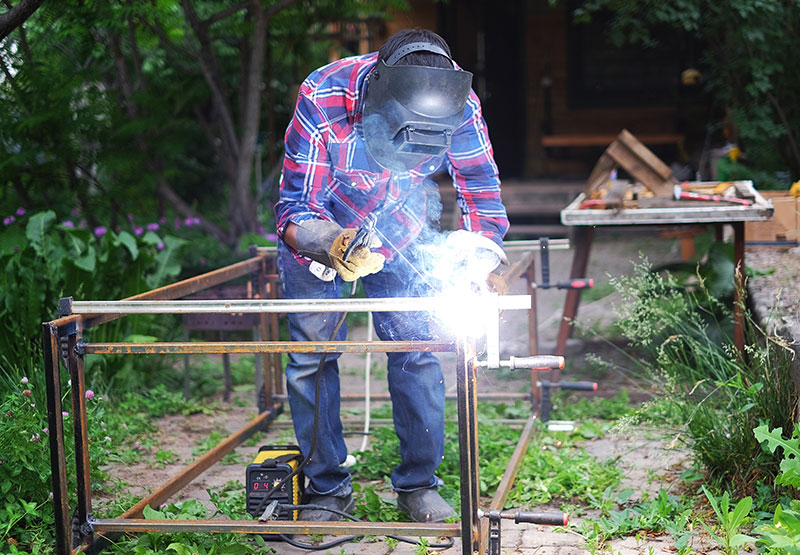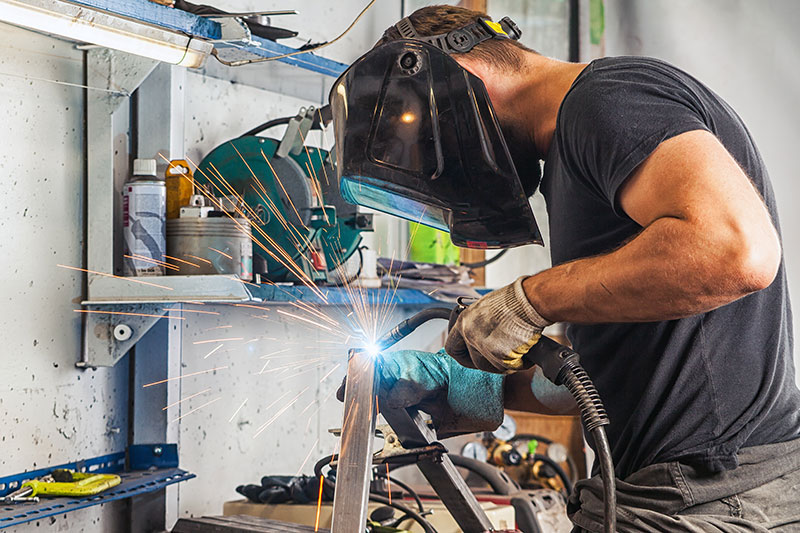Advertisement
Welding is a task that requires the welder to have a lot of patience and practice in order to deliver an excellent output. For beginners, therefore, proper guidance is needed so they can carry out the task at hand correctly and avoid accidents like burns and even explosions from happening while they’re honing their skills.
As challenging as it seems, welding can turn out to be an easy activity given that you have the right mindset, energy, tools, and knowledge about welding processes such as metal inert gas (MIG) and tungsten inert gas (TIG) welding.
For successful welding projects at home, see so it that you take the following factors into account:
- Safety
Safety is the most important thing you need to consider before commencing any sort of welding activity. You need to ascertain that you have the proper personal protective equipment (PPE). This includes a certified welding helmet, welding gloves, a fire-resistant jacket, and safety glasses. You also need to have a good welding machine and some welding pliers, among other basic tools.
To avoid suffocation, the welding room should have enough ventilation. An alternative to that is the use of a fume extraction system.
Another safety precaution is that welding should be done in an area that’s far from any flammable materials. Also, the welding room should be spacious so as to allow sparks to fly freely.
- Knowledge About Different Welding Processes And Materials
Welding processes normally differ from one another since different materials need their own type of welding. Therefore, you have to know the type material you want to weld and then use the appropriate process for it.
The most common processes are TIG, MIG, and flux-cored welding. MIG and flux-cored processes are under wire welding and simpler when compared to TIG, which is often involved in automotive and architectural work.
Basic processes and consumables can lead to good outcomes in welding projects, but in some cases, you might require extra resources to get the results you want. Planning your projects well would help you determine the materials you’ll need.
An example is when you’re welding aluminum. The MIG process might give you a satisfying result. But to achieve a much better outcome, it’s a great idea to use a spool gun to feed the consumable.
- Proper Installation Of Consumables
A smooth and successful welding operation requires a proper installation of the consumables. Great weld quality can be achieved where there’s good conductivity. Consumables ought to be set up as tightly as required by the manufacturer.
Consumables used in welding include collet bodies, diffusers, nozzles, and contact tips. The proper and secure connection of consumables prevents the occurrence of accidents brought about by leakages.
- Overall Cleanliness
Cleaning the welding surface ensures that you eliminate any potential errors that might come up during your welding operation. Making sure that the surfaces to weld are also clean would help in the removal of impurities. These include moisture, dirt, and oil or grease.
Impurities normally lower the quality of the weld. Therefore, overall cleanliness will help you get high-quality output every time.
- Input Voltage
A higher input voltage allows you to penetrate thicker materials. Conversely, a lower voltage is enough for you to work with thinner materials.

Knowing the input voltage present in your home would let you know what materials would be possible for you to weld. The good news is that most homes are already equipped with the required voltage needed in welding.
- User Interface
You should consider getting a welding machine that’s simple to use. An excellent welder needs to allow you to select your process, thickness, and type of material to weld as well as the consumables. Some welders automatically synchronize with the voltage it’s plugged into, making your work simpler.
Going for a welder with an easy-to-use interface would enable you get your task done in time and with ease.
- Proper Maintenance And Storage Of Tools And Materials
Any tool or machine needs proper maintenance so as to have a longer life span and maintain their efficiency. Making sure that you constantly check on the connections, gas cylinder, power source, and primary power line would prolong the performance of your machine.
Also, having a good storage facility would ensure that your projects or tools won’t end up getting damaged due to weather changes.
Conclusion
Although welding is a skill that can be tricky to learn, by keeping the factors above in mind, you’ll be able to take on more complicated welding projects in no time. Whether you want to create a fire pit or a new gate for your home, you’ll succeed as long as you acquire the necessary tools, observe safety, and practice as often as you can.

